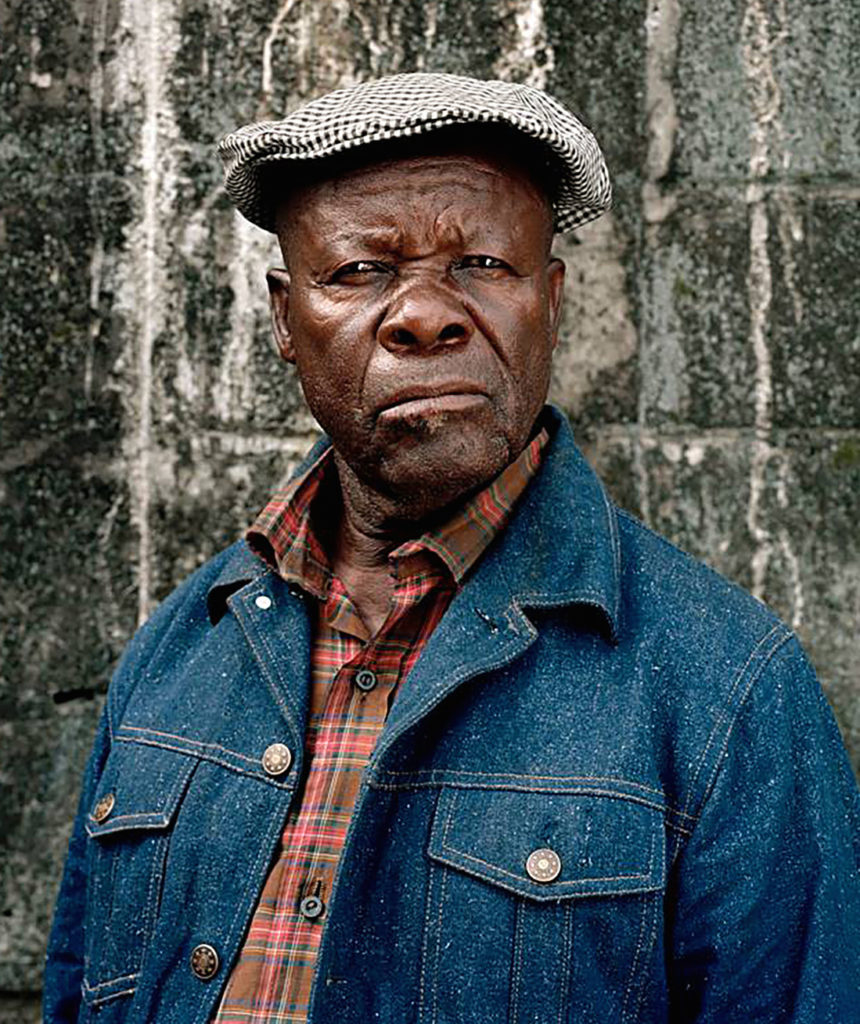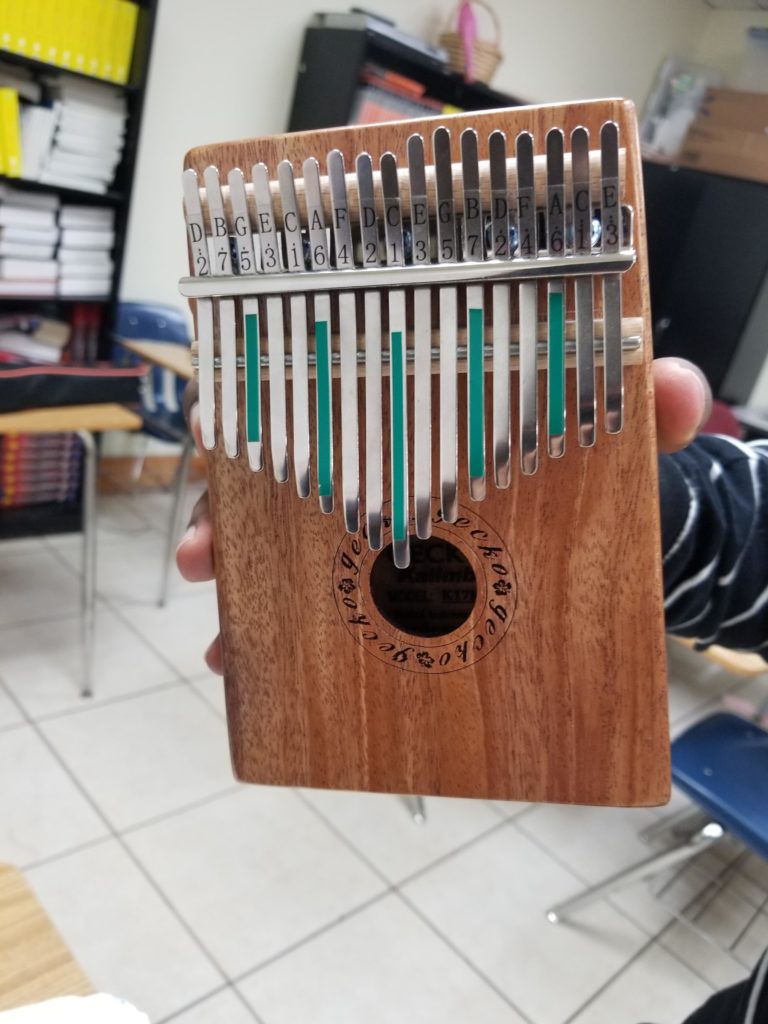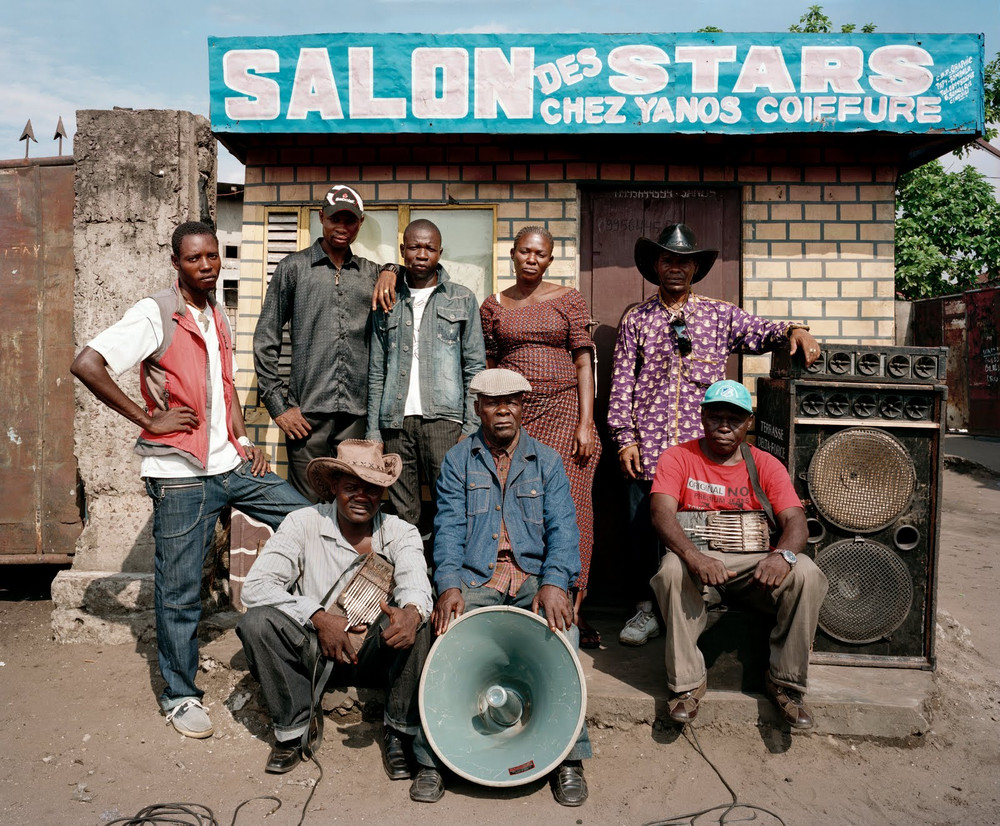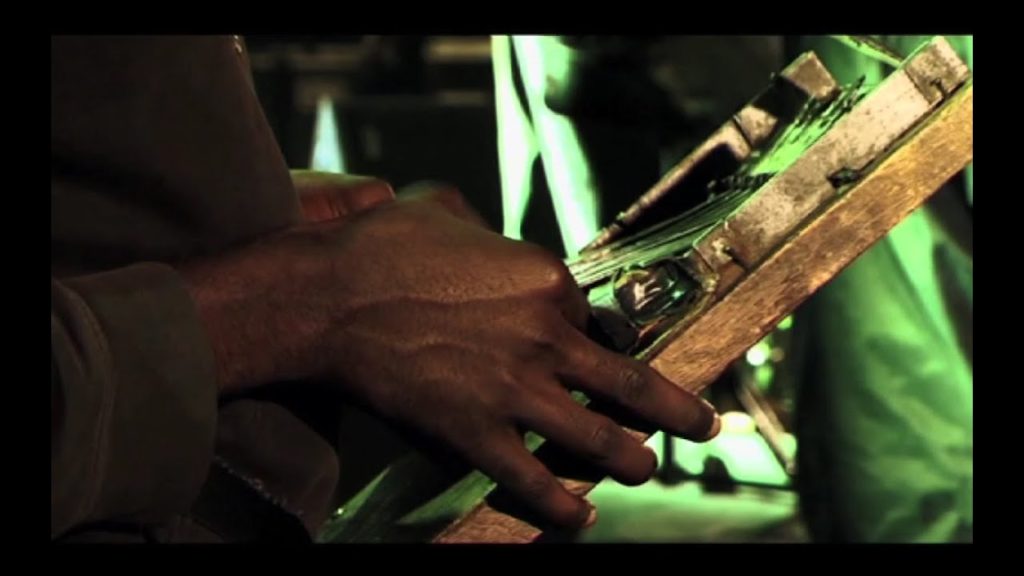
If there’s a more surprising convergence of cultures, I’d like to see it. Indie elitists (and a fair number of electronic music aficionados as well) have seized Konono No.1, whisking the decades-old act from their home in Congo. Of course, I’m not as surprised as the group’s members must be. For years Konono No.1 have played fairly traditional Congolese tribal music, championing hand-made drums and tiny thumb-pianos (called likembes). Of course, there’s a little twist. Without the financial means to buy equipment, they built their amps and microphones from salvaged car parts and discarded machinery.
Lucky for them, because the stunted, homemade amplification adds a distorted edge to their beats that has unwittingly won them western fans. Their recent release, Congotronics, harnesses this musical edge to create the out-there organic beats that propel the band to the edge of the electronic avant-garde. And they’re rolling with it, taking full advantage of their unlikely success by hitting the road.
One problem: as I walk into SOB’s, ready to see one of the band’s first stateside performances, their handmade amps are missing. On each side of the stage there’s a large bullhorn speaker, the type that you’d expect to emit an air-raid siren. But these are just for show; they’re not even plugged in. I later find out that the band broke one of its original amplifiers on the plane ride and the other shorted out the evening before this performance. The group has been forced to trade in the allure of rickety, jerry-rigged equipment in for reliable, run-of-the-mill amps.
Uh oh. Sure, we’ll shell out a few bucks to see an out-there African band but will this sniveling crowd of indie wonks make it through an evening of unadorned tribal music? I know I will, but I’m not so sure about the guy in the black horn-rims. With no uber-hip distortion to dress up the music, all that remains are the modest men behind the curtain. Will that be enough?

Mingiedi, the band’s, longtime bandleader, moves slowly onto the stage. A stout man, much older than the rest of the group, the skin around his eyes looks hard, leathery, and wrinkled. He takes up his thumb piano — a small board with a number of spiky metallic tongues jutting out — and leads his band into battle, a fight to meet our expectations, without the gear we expected.
Well, “lead” isn’t quite the word. Another man, maybe 40 or so, is the group’s actual frontman, standing at the edge of the stage next to a middle-aged African woman with high, tightly-drawn cheek bones. They’re joined by three younger thumb-pianists and two drummers. One hammers a single snare while the other plays a large animal-hide conga drum, and some of the thumb-pianists pull double duty on a set of battered, taped-up metal cowbells.

Across the group, the age range could easily span forty years. As they break into the first song, one thing becomes clear: this is not going to be what anyone expected. Missing are the crackly tones that brought the band its acclaim. Instead, more spaghetti-string, popping sounds stream from the amps. Of course, that’s not a bad thing. With the jarring edge lifted, the band’s steady conga drumming and mesmerizing thumb-pianos lull the listener. After awhile you begin to drift off, captured by the steady pulse of the music. This is, of course the point of traditional Bazombo trance, the form from which the band draws its inspiration (no, despite creative reviews, it’s not electronica that inspires them).
Ten or so minutes into their first song I begin to float, barely noticing as my hips sway in time. I’m jolted back to life by a strange realization: “Is that guy wearing a leather jacket?” It hadn’t struck me until this moment, but the band members are all dressed, well, rather strangely (at least not the way I thought they’d be). Spurning the traditional garb one might expect a band playing traditional music to wear (if for no other reason than to meet Western expectations), each of the members sports an “American” look.
Let’s not jump to conclusions; this isn’t the act of some wily agent, more the result of the entrance into American capitalist commerce. Everything looks like it was picked up earlier that day on Canal Street. The younger members wear jean-jackets with cartoon Tazmanian Devils on them. One of the thumb-pianists boasts a new leather biker jacket and leather “Dupont” cap. And the slinky, eccentric singer bounces up and down in a cowboy hat and silky shirt festooned with oriental dragons (the kind I so unhiply wore to middle school dances). A sign of the band’s success, if not their sense of American style, these new duds show that this tour has lined the band’s pockets a bit. And now that they’ve got some cash, they’re none to keen on dressing to meet expectations. And that idea brings us back to the music.


To the band it might seem better that their old amps have been replaced by more serious gear. After all, while we are impressed by the group’s resourcefulness and their ability to craft innovative instruments out of discarded junk, they did so because it was their only option. Now that they’ve gotten some attention, they have the chance to use legit equipment. Who’s to say this isn’t the sound they’ve always wanted? Stripped of their odd electronics, the band’s tunes sound like normal African pop instead of a distortion of such music.
The songs are long vamps on a few repeated riffs, call-and-response segments, and unrelenting rhythms. This isn’t to say that the music isn’t terrific. While most of the members remain pretty still, a bit shy it seems, the male singer spins a towel in the air (much like a rap superstar), pumping his fists and leading the crowd in energetic claps. More introverted, though stunningly sweet, the female singer sways slowly, then smiles before twisting into a deep, bone-shifting torso shake – she isn’t so much dancing as controllably, seductively convulsing.
Delivering their staccato, monotone lyrics (which no one in the crowd can hope to understand) the singers work the crowd into a pleasant frenzy. The band hammers out complex parts, employing up to three thumb pianos, and plucking out complex, bouncy melodies. This may not be what the crowd came to see but it’s entrancing nonetheless. The band’s aged leader stands non-chalantly behind the rest, hitting the thumb-piano with all his heart. A photographer in the crowd tries to catch his performance, but every time she raises her camera he looks directly into the lens and smiles haphazardly as it flashes.

Towards the end of the show, the singer begins to dance wildly across the stage, rubbing his thumb and forefinger together, the universal sign for money. Slow on the uptake, the crowd doesn’t realize that he’s having a go at the age-old street-performer trick of calling for the audience’s cash. A few dollar bills are awkwardly passed forward. The singer holds them out with two hands as if to inspect the donations. He then takes the bills, rubs them against his forehead, and tosses them to the ground. As he repeats these steps the audience begins to catch on and passes more and more money forward.
Before anyone knows what’s happening ten- and twenty-dollar bills are streaming in and the band’s pile has grown. A quick glance counts several hundred dollars at the singer’s feet. The crowd (who may or may not know that this is how many African musicians get their pay for a usual gig – directly from the people watching rather than from a promoter) seems to play more into the novelty of the act than anything else. Ironic I think. It was novelty that got Konono here in the first place.
American listeners invited Konono No.1 into their hearts, but maybe we did it for the wrong reason. We call their work artistically innovative, while to them it might just be a compromise. Would any of us have been intrigued if their gear had been the usual, humdrum assortment of traditional instruments rather these chimerical, rudimentary electronics? While Konono’s ticket for coming may have been bought by the desire of so many hipsters to see these Africans paraded about in all their awkward, impoverished Africanness (even the exotic sound is the result of homeland poverty, an extra selling point for their authenticity) the band hardly delivered a pathos-laced spectacle.

No, they played crisp, clear notes (perhaps for the first time) and held an indie crowd rapt with these surprisingly traditional tones. They may have played on our image of their poverty (soliciting donations even though, unlike many African events, they were clearly being paid by the promoter), but otherwise they spurned all other expectations. Perhaps this is why Papa Konono stands quietly in the back, smiling the whole time. Some might say that while we’re using the band to fulfill a desire for an authentic “other,” but perhaps he’s the one enjoying the last laugh. Another few big gigs and he can ditch those crappy amps forever.
Konono No. 1 and America's Obsession with the African "Other"
By Andrew Phillips Posted in Commentary, Live Review, Writing on September 22, 2020 0 Comments 8 min read